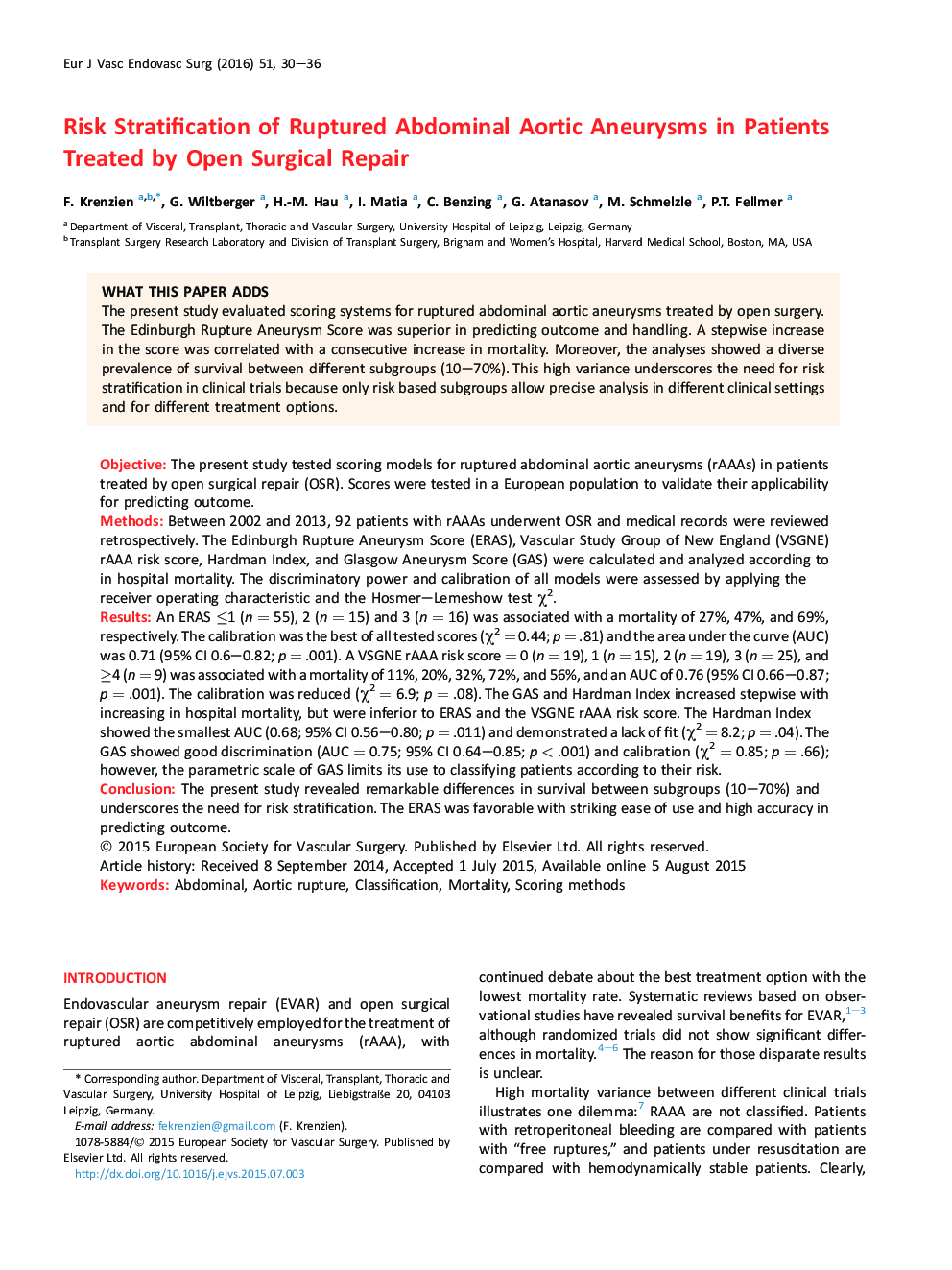| Article ID | Journal | Published Year | Pages | File Type |
|---|---|---|---|---|
| 5957210 | European Journal of Vascular and Endovascular Surgery | 2016 | 7 Pages |
ObjectiveThe present study tested scoring models for ruptured abdominal aortic aneurysms (rAAAs) in patients treated by open surgical repair (OSR). Scores were tested in a European population to validate their applicability for predicting outcome.MethodsBetween 2002 and 2013, 92 patients with rAAAs underwent OSR and medical records were reviewed retrospectively. The Edinburgh Rupture Aneurysm Score (ERAS), Vascular Study Group of New England (VSGNE) rAAA risk score, Hardman Index, and Glasgow Aneurysm Score (GAS) were calculated and analyzed according to in hospital mortality. The discriminatory power and calibration of all models were assessed by applying the receiver operating characteristic and the Hosmer-Lemeshow test Ï2.ResultsAn ERAS â¤1 (n = 55), 2 (n = 15) and 3 (n = 16) was associated with a mortality of 27%, 47%, and 69%, respectively. The calibration was the best of all tested scores (Ï2 = 0.44; p = .81) and the area under the curve (AUC) was 0.71 (95% CI 0.6-0.82; p = .001). A VSGNE rAAA risk score = 0 (n = 19), 1 (n = 15), 2 (n = 19), 3 (n = 25), and â¥4 (n = 9) was associated with a mortality of 11%, 20%, 32%, 72%, and 56%, and an AUC of 0.76 (95% CI 0.66-0.87; p = .001). The calibration was reduced (Ï2 = 6.9; p = .08). The GAS and Hardman Index increased stepwise with increasing in hospital mortality, but were inferior to ERAS and the VSGNE rAAA risk score. The Hardman Index showed the smallest AUC (0.68; 95% CI 0.56-0.80; p = .011) and demonstrated a lack of fit (Ï2 = 8.2; p = .04). The GAS showed good discrimination (AUC = 0.75; 95% CI 0.64-0.85; p < .001) and calibration (Ï2 = 0.85; p = .66); however, the parametric scale of GAS limits its use to classifying patients according to their risk.ConclusionThe present study revealed remarkable differences in survival between subgroups (10-70%) and underscores the need for risk stratification. The ERAS was favorable with striking ease of use and high accuracy in predicting outcome.
